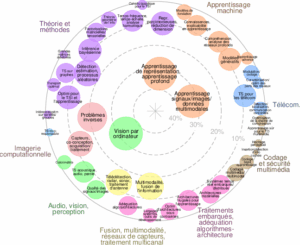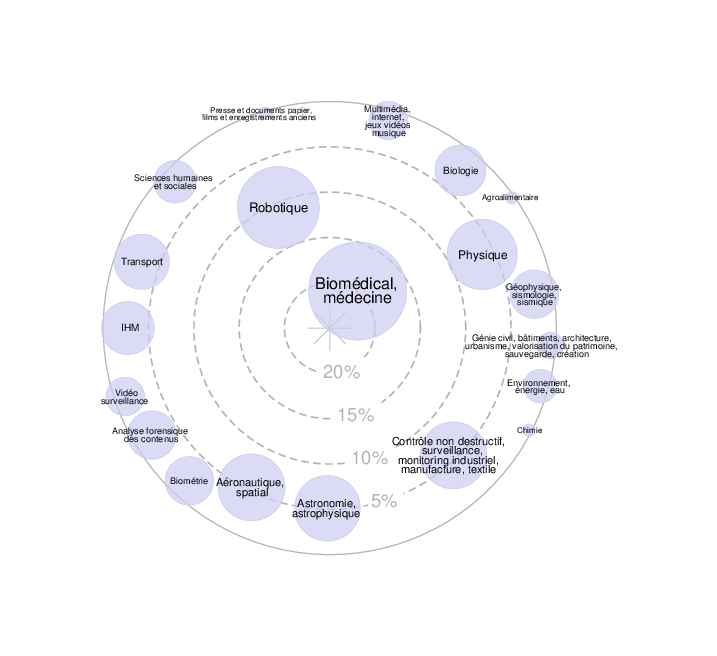Stage de Master
Many real signals can be accurately modeled as the superposition of locally band-limited, amplitude and frequency-modulated (AM-FM) components commonly referred to as the modes of f . These multicomponent signals often contain strongly frequency modulated modes, as for instance chirps encoutered in radar, speech processing or gravitational waves detection. These signals can be analyzed using the Short Time Fourier Transform (STFT) which applies a sliding window function (such as a Gaussian) which draws some ridges in the time-frequency (TF) plane. The reconstruction of the modes, based on the information computed on the ridge, is possible —under certain separation conditions— from reassignment methods or the synchrosqueezing transform (SST). However, when two or more modes are close together or intersect, the mixing of the phases produce constructive or destructive interference resulting in complex patterns that are difficult to analyze. Efficiently separating interference from the rest of the signal in the TF plane is crucial for applying reassignment methods effectively. In image processing, variational approaches involving proximal techniques have been proposed to separate texture from geometry in images, but the results remain incomplete.
The objective of the master internship is twofold: first, to fully eliminate interference from the spectrogram image and second, to enhance the reassignment process using curve superresolution methods. The internship is thus divided in two main tasks, and the student will have the opportunity to delve deeper into either one, depending on their interests and aspirations:
-Interference removal: we will explore various techniques to separate interference from the signal in the TF plane. Given the recent trend of pairing these approaches with deep learning strategies—by unrolling a proximal algorithm to find maximum a posteriori estimates—we will investigate how these methods can benefit our specific application.
-Enhancing ridge reassignment: we will examine how recent advancements in curve detection methods can improve ridge reassignment by retrieving them off-the-grid, extending prior work on line detection viewed as a convex super-resolution problem.
Supervision / contact :
-Sylvain Meignan (sylvain.meignan@univ-grenoble-alpes.fr)
-Kevin Polisano (kevin.polisano@univ-grenoble-alpes.fr)





